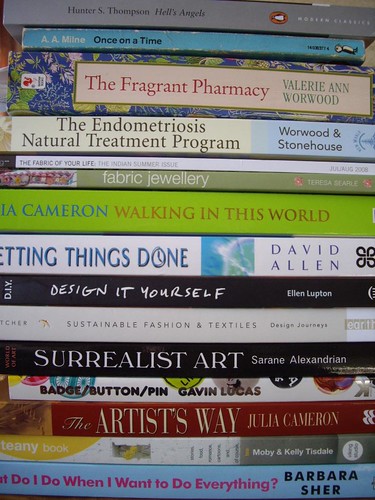Hopefully you can all see this embedded video of the finches at the Barbican in London – an installation by Céleste Boursier-Mougenot. We went on a little trip yesterday evening, and had an absolutely magical time watching and listening to a room full of little birds and musical instruments.
The video is of a previous incarnation of this installation, so the environment isn’t quite the same. The floor at the Barbican is wooden decking, with little islands cut out of it which are filled with sand and grass-type plants. The guitars and cymbals are mounted in these islands. The rest of the room is white, and there are roosting boxes high up on the walls so that the birds can hide away if they want to.
The sound at the Barbican isn’t quite as dramatic or as loud as it is in the video – unless the birds were just in a particularly quiet mood yesterday. The speakers are mounted well away from the individual instruments, so it’s quite hard to tell exactly where the sound is coming from. This makes the experience slightly more surreal, and presumably helps the birds not to be terrified that they’ve just made a bass guitar go CLANG.
The birds do fly free, so if you’re nervous about that it might be a bit stressful.
But you can get really close to the finches, and pay real attention to them as they go about their birdy business. I stopped noticing the sounds after a little while, but it’s really interesting how the noises that the birds make blends in really well to the constant little feedback sounds of them landing on the guitars or the microphone cables. Every now and then there would be a flurry of activity on a cymbal or a guitar, but for me the excitement and magic of the room was getting to see the birds up close and personal, interacting with one another. The whole room was filled with quiet, respectful, smiling people. You could see that everyone was dying to get really close to the birds, but everybody kept their distance – and if you got too close, the finches would simply fly away. At one point a finch sat on a man’s foot, and he looked as though he might explode with joy whilst standing extremely still.
Paul spent ages watching and listening to one little finch that liked to sit on the cable of a microphone that was attached underneath a cymbal. His little feet made scratchy pickup sounds as he shuffled back and forth. The cymbals were really lovely to listen to. They were mounted upside down, and two were filled with seed and another with water. As the birds pecked at the cymbals to eat the seed, there was a beautifully gentle ringing sound, like the softest gong.
I spent ages watching one little finch that had fallen asleep on the neck of a guitar. He looked so comfortable, perched on the strings! His eyes were shut tight, and he was gently rocking back and forth as he slept. Bless. There were also a pair of birds that had made a nest on another guitar. They were making a lot of noise as they rearranged all the strands of grass to their satisfaction. They were also quite defensive, and would sing loudly at anyone who came too close.
The Curve Gallery at the Barbican is open from 11am-8pm every day, and until 10pm on Thurdsays. We went at about 6:30pm, which turned out to be ideal. We only had to queue for about five minutes (sometimes the wait is up to three-quarters of an hour), and we spent around an hour inside. They only allow 25 people inside the exhibition at a time, so it never feels crowded. Entry is free, and sadly you’re not allowed to take photographs inside.
I only wish I lived close enough to go back again and again.








